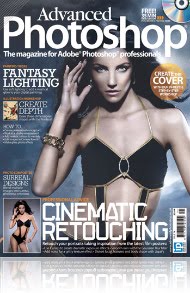Today I’ve got another of my occasional posts of various items related to gender and technology. All of these examples either reflect the male gaze in tech-related media or reinforce the idea that the primary creators and users of science and technology are males.
Morgan A. pointed out a recent cover of Wired, which she read about on Cindy’s Take on Tech:
In her post, Cindy points out that Wired often sexualizes or trivializes women when it puts them on the cover, or uses women to illustrate stories about other topics rather than focusing on their accomplishments. A few examples:
So the first one mentions being naked, the second has a woman displayed synthetic diamonds, the third uses a woman to illustrate a story about being famous even if you’re a “nobody,” and Uma Thurman appeared because she played a character in a movie based on a novel by Philip K. Dick.
I looked at all Wired covers from 2005 through 2010. Of those, 46 had people on them, in either human or cartoon form (including body parts, such as the boob cover), whose sex could be fairly well inferred. And 12 of those, or 26%, had a woman (or female character, as with the manga cover) either alone or pictured with men. Those 12 included several of the covers pictured above, as well as one showing the lower half of a woman’s face as she puts a pill in her mouth. The accompanying text is for an article titled “The Thin Pill.” When I went to the article, I found this set of photos:
So we have part of a naked woman’s body to represent the idea of thinness itself, one image of a male scientist quoted in the story, and another image of a clothed man who isn’t identified.
In a similar example, Julie Alsop sent us a link to a post at twatterr about covers of magazines about digital photography and Photoshop. A few examples:
The twatterr post has a link to archives to see covers of back issues of a number of digital photography magazines, and as she points out, they tend to use lots of sexualizes images of (very thin) women. Passive, sexualized female robots/cyborgs are another common theme.
Merve G. sent in this video, titled “The Power to Create,” made by the University of Copenhagen. In the video, women are sexualized, and we see the male = active, female = passive dichotomy: men have the “power to create,” while women are the things being created by them:
Barbara B. N., a Research Fellow at the Technical University of Lisbon, sent in this Nokia video in which the woman describing the features of a Nokia product first makes sure to describe herself — she’s hot — and at the end of the video tosses her head seductively and invites you to choose another video to “see more of” her:
And finally, an anonymous reader let us know about the “Geek and Gamer Girls” video, a parody of Katy Perry’s “California Girls” created by four actresses who called themselves Team Unicorn:
As the sender-inner says, she feels conflicted about the video. On the one hand, the song does celebrate girls being geeky and into science and technology and other elements of geek culture often associated mostly with guys. But on the other hand, “the difference between the message I got from the song lyrics and the message I got from the video left me rather uncomfortable. I guess it’s only cool to be a geek girl if you’re really really pretty.”







Comments 46
Meg — December 22, 2010
What was clear to me about that video was that it wasn't targeted at female geeks. They had conventionally attractive women and explicitly, purposefully conventionally unattractive men, thus inviting men to identify with the video and women to aspire to the video. The message is basically, "your girlfriend could be hot, not care how you look and get all your nerdy jokes and play video games with you."
It is reproducing a common situation in nerdy culture, where indeed the women who are nerdy in similar ways to how men are expected to be nerdy (not physically active, not caring about personal grooming or shopping or clothing, valuing video game skill over other personal qualities) are considered undate-able by the the same men who insist on those allowances for themselves.
If you want to see a nerdy video targeted at female nerds, I suggest the pipette boy band. Since it's an advertisement trying to sell to lab biologists and lab techs (all of whom tend to be female, since biology is possibly the least hostile of the sciences), it presents an fantasy of acquisition instead of a fantasy of aspiration to nerdy women.
Of course, it also doesn't include any women.
There aren't very many pieces of media that are nerdy women speaking to other nerdy women. I don't know whether that is because most nerdy women don't see other women as as likely to be "like them" as nerdy men (geek-dom as winning over gender identity), or if such media exists and simply doesn't spread as far as those targeted at men. The only example I can think of is the recent Star Wars Pride day and the associated campaign in support of Katie.
Treefinger — December 22, 2010
There's a popular science/humour show in the UK called Brainiac: Science Abuse. It is OVERWHELMINGLY targeted at men. There is a bit with a busty Asian "Professor Myang Lee" who suggestively drops fruit into water (to see if it will float or not) and swings a pair of iron balls into various objects to see if they will smash or be toppled over. There's another bit where someone gets to go on the show and see if they can explode various items, which is treated a bit like a game show, complete with lovely lady escorting the man around. There's a bit where Jon Tickle goes up to an attractive nurse and asks her to show him something interesting his body can do (the joke being that she shows him some science-based illusion rather than responding to the innuendo).
I had to turn off the tv in disgust the other day when one episode tested whether men were more likely to gawk at cleavage or a half-exposed butt with a thong on it (attached to women in a park who were looking down and couldn't notice the looks), and repeated the ev-psych belief that "some scientists believe that breasts deliberately mimic bums" in order to attract men.
Gomi — December 22, 2010
Just so you know, in the selection of covers you use for illustration:
The first cover mentions "naked," yes, but it's a picture of Jenna Fischer, comedian from 'The Office,' which the issue uses as a satirical examination of corporate transparency (naked = transparent). Admittedly, it's blatantly using nudity to illustrate the point (the physical cover was two layers, and the transparent out cover could be opened to "peel off" her suit and reveal a second sign covering her body, discussing the article), and I remember a lot of letters to the editor about it. But Wired does have a tradition of using comedians and actors in weird outfits or photo shoots. Will Farrell, Brad Pitt...
Then, the third cover is of Julia Allison. She's not being used to "illustrate stories about other topics." She's there because of her creation of nonsociety.org, which the article discusses as a focal point. She's there because of her accomplishment, not simply illustrating a point.
The fourth cover is of Jessica Rose, who played Lonelygirl15, and is the subject of the main article of that particular issue. Again, she's not passively illustrating a story, but is there because of her accomplishment (as much as memes like Lonelygirl15 are accomplishments).
And Uma Thurman is there because, while the main article is about PKD stories becoming movies in general, the secondary article is specifically about 'Paycheck,' which came out at the time and was a PKD story. She's then interviewed about the movie and PKD in general. So, arguably, Uma's not simply an illustration either, but there because of her accomplishment as an actor (though the movie kind of sucked).
Wired certainly uses sex to sell their issues, but not every cover with a woman is just "illustrating" it. Many times they're there for their accomplishments as much as men are.
As an external viewer, do you assume the men on the covers are only illustrations? Or do you assume they're there for their accomplishments? Because, as a reader of Wired, I can tell you the male cover model is sometimes passive illustration too.
Tom — December 22, 2010
Sorry, what was this post about again? I got distracted.
Mashed Potatoes — December 22, 2010
Not to name drop or brag, but I had Cindy Royal as my web design professor in college. She has headed panels for South by Southwest Interactive focused on getting girls and young women into technology. This woman is amazing. Her Break Up Note to Wired caught internet buzz through Facebook, then Bitch Magazine reprinted the letter, and it took off from there.
As for that music video, I had to stop it after the first minute, mostly because I can't stand Katy Perry's music (even in parody). The concept is all well and good, but as commenters have pointed out, it's more of the same for the image making industry. Hot girls being nerdy, like, LOL you guys. (Not that I'm dissing on conventionally attractive women that are nerds or smart.)
Vidya — December 22, 2010
"I guess it’s only cool to be a geek girl if you’re really really pretty."
These days, it's only acceptable to even appear in public as a female if you're "really really pretty," let along to actually be or do anything on top of that. This is one of the most dramatic difference I notice between the 'media-tized' social realm today (including girl-power type campaigns) and the representation of women in (roughly) pre-1990s contexts, where 'pretty' girls held a certain extra cache, but were not the only variety of female human being recognized to exist. Today, if you are not 'hawt', it is no longer acceptable to be seen at all (except perhaps as shear 'repulsive' spectacle on The Biggest Loser and the like). Female subjects are socially policed and judged, and, if judged insufficiently 'hawt', are shamed and humiliated for attempting to move about in the world or -- especially -- to appear in media contexts.
Sara P. — December 22, 2010
I am surprised there was no mention of the lack of women (people?) of color on the cover of Wired. Correct me if I am wrong (I am not a frequent reader), but there doesn´t seem to be (m)any.
Greg — December 22, 2010
The Copenhagen one is interesting since it's women, rather than men, who need to be encouraged to study science more.
Kelly — December 22, 2010
"men have the “power to create,” while women are the things being created by them"
I snorted a little bit while reading this quote, considering women are the ones who give birth (of course with some external genetic material)
Tom — December 22, 2010
For the last video, if it's not obvious to everyone, this is simple a male fantasy but redesigned for "nerds."
Instead of the ideal girl being into the stereotypical things like athletes, hunky celebrities, clubs/bars, shopping, fashion, or other places dominated by the "ideal man" or by other women, the ideal woman is now part of the a space where traditionally they aren't allowed and usually avoid. They are now accessible to you the nerd, a non-traditional non-ideal man.
This isn't different from sitcoms where an non-ideal man is married to an ideal woman (even including cartoons like Family Guy). Although the these men are still traditional in their masculinity, love of sports, competition, etc.
Not to mention the overt sexualization of the females in the video, and I'm sure there has to be an article out there somewhere that looks at the semiotics behind the different camera angles and the placement/positions of the women(Stuart Hall, maybe?). Especially the overhead shot with the girl on her back only seen from the shoulders up. The first thought that comes to mind is that this a reference to the missionary position but unfortunately sociology is about running stats not examining things like this.
So, if you need me I'll be running some regressions and playing politics with the professors in my department in order to obtain a research assistantship/co-author opportunity, and hoping to get a job one day.
Ariel — December 23, 2010
While under the same theme, these are 4 different posts worth of topics. I feel like sociology, as a discipline, keeps trying to lump technology together when in reality it's past the point where doing so is productive.
That ImagineFX issue alone is a study. The magazine really has strong female staff, but as you read it (that issue particularity) you can feel them struggling against the expectations of male readers. One question asked in that issue was how to do a "sexy zombie". The artist's reply was that she felt it wasn't something you really could do, but then proceeded to explain how, if you really feel the need. You can also see the various versions of that cover before they decided on that one.
And the gamer girl song isn't something be conflicted about. It's just something to be angry about.
Now, if you're looking for a geek music video to feel conflicted about: http://www.funnyordie.com/videos/70bf2e4f05/fuck-me-ray-bradbury Language warning and pretty much everything warning! It's probably designed for men, odds are good, but somehow I feel like it is so over the top in it's sexuality it is actually aimed at female geeks to the same extent. I mean, it's about reading sci fi classics over dating. <3
muke — December 23, 2010
Cindy also posted a video on the post and the responses to it: http://tech.cindyroyal.net/?p=984
This also reminds me of this Feminist Frequency video http://www.feministfrequency.com/2010/07/no-girls-allowed-file-sharing-culture-and-bittorrent/ which discusses this sort of thing in relation to file sharing.
Mrs.Robinson — December 23, 2010
Male-oriented magazines and television shows using attractive and scantily-clad women in their promotions and products? What will they think of next? Apologies may be in order to women who are offended by depicitons of women that do not emphasize their intellectual or professional accomplishments, but it has been demonstrated scientifically that men respond to visual stimulus of a certain ilk. Hucksters are taking advantage of this apparent fact. In the process of taking advantage of the men they may be helping to shape the values of some women, a decidedly antiutopian scenario, IMO. That doesn't mean that as a man I couldn't stare (apparently lustlessly) for minute after minute of the cleavage cover of Wired above. I read this as one part of my brain highjacking my attention - maybe something to do with a selfish gene? (I feel so used by my DNA: it doesn't care about me at all; My genetic material is just using me to try to replicate itself! ,and i don't really want it to stop.)
James T — December 23, 2010
Given the kind of work available to professional Photoshoppers, I'm unsurprised that magazines on the topic overwhelmingly contain tutorials in objectification.
As for Wired, I don't think they've given nearly enough time to the fascinating subject of computers for women: http://www.youtube.com/watch?v=0GThtMAZGYU
Selidor — December 23, 2010
I used to read ImagineFX, and they would always have the busty, scantily-clad women as the cover illustrations. I remember reading readers' letters in it and forum posts about it (including from male readers, I think) pointing it out and suggesting that they diversify a bit, and the magazine staff would generally agree and then... do nothing about it. It wasn't the reason I stopped reading it (the magazine is pretty expensive, and I don't have as much time as I used to) but it was certainly exasperating and didn't exactly endear me to the magazine. I used to feel vaguely embarrassed walking up to the counter with it because it looked like Maxim for fantasy geeks or something (I was about 16 when I started reading it, and generally perceived as female by others).
JGH2 — December 23, 2010
As an IRL gamer girl, the "Geek and Gamer Girls" video pisses me off because it reinforces a sort of geek Madonna/whore complex: girl gamers are either impossibly beautiful, lithe, and rare, OR we're unattractive, overweight, and covered in Cheetos. You never see nerdy women represented that are average-looking: we're either unattainable sex objects and, well, "unicorns", or too ugly for the notice of geek dudes (who probably wouldn't be covering any romance novels themselves.)
For a relatively realistic portrayal of a woman into games, I've always admired what Felicia Day has done with "The Guild." Sometimes the show is (more than) a little silly, but the guild mates - including 3 women - feel reasonably "real" to me.
j — December 24, 2010
I'd love to know if there are any non-sexist resources/communities/tutorials for cg artists out there. All digital art communities I have encountered have been completely filled with the idea that every user is a sexist hetero man who want to draw fodder for his own wanking.
Mushin » Blog Archive » Technology, sexism, and the male gaze — December 28, 2010
[...] Sociological Images published an interesting post about gender and technology. I’m very pleased to see my contribution in the article, namely the new commercial video from [...]
Women are sex objects — if you ask men « Patrick Boltze — January 2, 2011
[...] Sharp has posted on her magnificent blog „Sociological Images“ on how women are portrayed as sex [...]
Emily — January 30, 2011
As a geek girl myself, that video was kind of awkward. On one hand, the naked women on a pile of media = obviously directed towards the male gaze. But the shots with all 4 girls dancing just came across to me as four female geeks who are having silly, sexy fun. If the entire video had been like that, I would've unequivocally loved it.
And yeah, what others said, Date My Avatar is fantastic!
Strawberryfuma — June 27, 2011
I know this is gonna sound awful.
But I feel like I only hear about girls struggling to be apart of the "geek" community because they're so unbelievably hot that guys can't believe they're into games/old movies/technology. I, as a rather homely girl, have never had a problem with a guy thinking I belong. Maybe it's because I "dress" the part or I'm not conventional hot.
And I find this video painfully hurtful because the girls aren't even taken seriously. They're laying around in piles of games, or having a damn pillow fight. When you think of guy gamers, they've got the head sets, their junk food, they're dressed in normal clothes, and they're focused on the task at hand. Imagine a video with a guy playing and twirling his hair while tow other guys tickle each other in the back. It would look ridiculous.
I know that this is just their attempt to try and normalize female gamers, but I feel that all it does is fetishize them, as well as make some some unrealistic standard for all types of females. I know girls that relish in the fact that they're not girly and so forth, but it's like, "yeah, even if you don't fit THAT standard, you still have to fit this one."
Carey Lind — November 28, 2024
The topic of "Science, Technology, and the Male Gaze" highlights how biases have shaped technological development and media representation. As we strive for inclusivity, addressing these issues is crucial. For instance, transferring files between Android and Mac can be a challenge, but https://www.linkedin.com/pulse/how-transfer-files-from-android-mac-electronic-team-inc-caqcf/ offers an easy solution to bridge this gap.
antony — December 31, 2024
Prepare to explore the world of geometry dash meltdown, where music serves as the soul that drives every movement rather than merely being the background music.